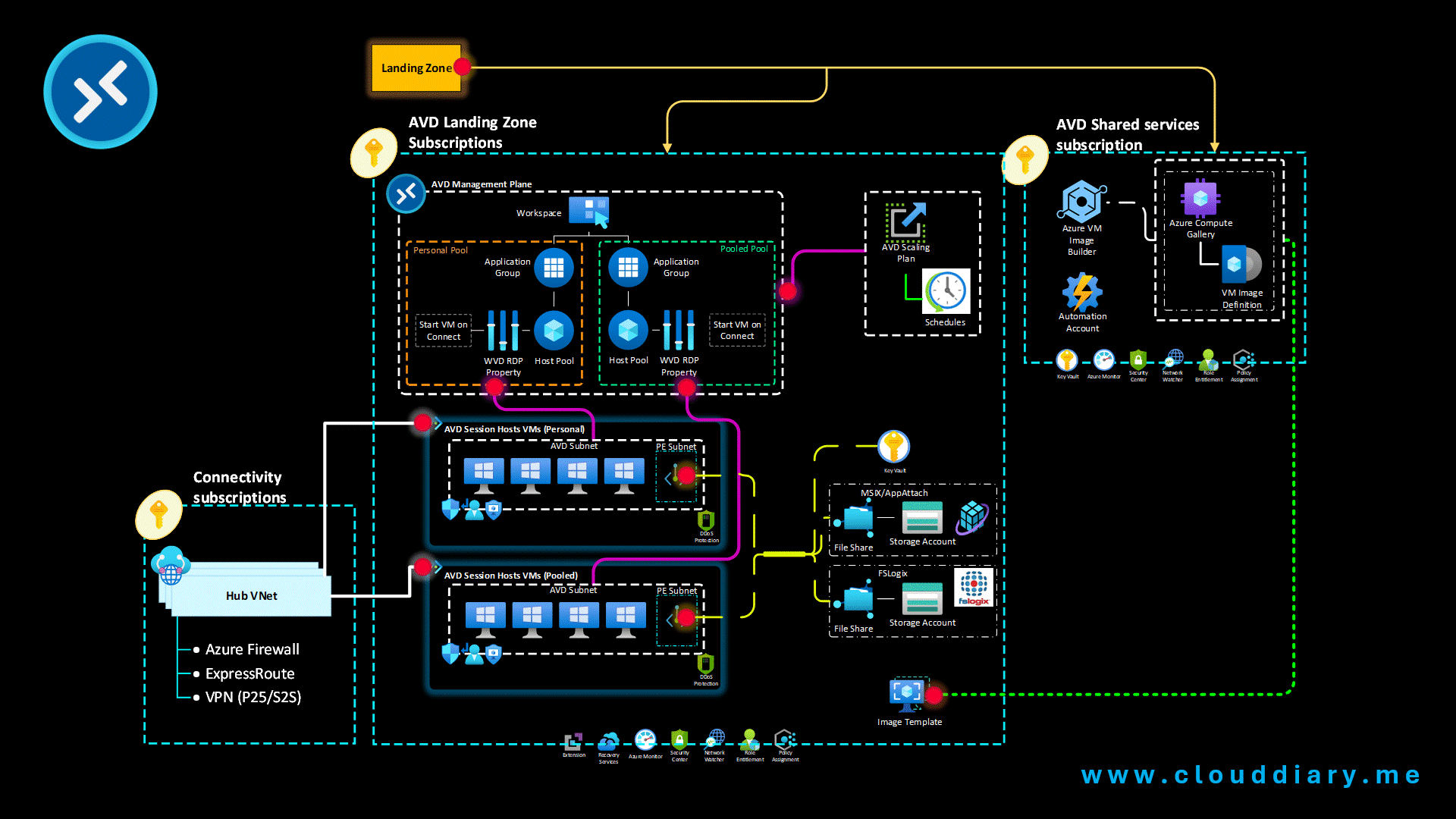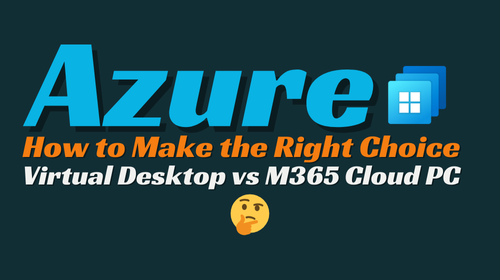- Home
- Azure Virtual Desktop
- Which Virtual Desktop Solution is Right for You? Cloud PC vs. Azure Virtual Desktop💻
Which Virtual Desktop Solution is Right for You? Cloud PC vs. Azure Virtual Desktop💻
Windows 365 Cloud PC vs. Azure Virtual Desktop
Which Virtual Desktop Solution is Right for You?
The answer often boils down to “It depends.” However, by reading this blog, you’ll gain a clear, high-level understanding of whether Azure Virtual Desktop (AVD) or Windows 365 Cloud PC is the best fit for your needs.
Microsoft offers two powerful solutions to support remote and hybrid work environments: Azure Virtual Desktop (AVD) and Windows 365 Cloud PC. Both platforms aim to deliver virtual desktop experiences, but they cater to different needs and scenarios. Let’s dive into what each of these solutions offers, how they compare, and their specific use cases.
What is Azure Virtual Desktop? 
Azure Virtual Desktop (AVD) is a comprehensive desktop and application virtualization service hosted on the Microsoft Azure cloud. Initially known as Windows Virtual Desktop, AVD allows businesses to deploy and manage scalable virtual desktops and remote apps.
Read More of My Blogs about AVD
Key Features of AVD:
- Scalability: AVD can be scaled up or down to meet the demands of organizations of all sizes, making it suitable for both SMBs and large enterprises.
- Multi-session Windows 10/11: Unique to AVD, it supports multi-session Windows 10 and 11, allowing multiple users to log into a single virtual machine, reducing costs.
- Integrated with Microsoft 365: Seamlessly integrates with Microsoft 365, allowing users to access their Office apps and files as if they were on their local devices.
- Security and Compliance: AVD benefits from Azure’s robust security features, including compliance certifications and advanced threat protection.
What is Windows 365 Cloud PC?

Windows 365 Cloud PC, part of the Windows 365 offering, is a virtualized Windows experience delivered as a cloud service. It’s designed to provide a simpler and more predictable virtual desktop solution for businesses that prefer a per-user licensing model.
Key Features of Cloud PC:
- Simplicity: Cloud PC is designed for ease of use and administration, with a focus on a seamless user experience.
- Persistent Desktops: Each user gets a dedicated virtual machine that remains consistent, providing a personalized desktop experience with persistent settings and data.
- Integration with Microsoft Endpoint Manager: Cloud PCs are managed through Microsoft Endpoint Manager, providing unified device management across physical and virtual desktops.
- Predictable Pricing: Cloud PC offers fixed per-user pricing, simplifying budgeting and financial planning.
Differences and Benefits: AVD vs Cloud PC 🔄
Architecture and Management
- Azure Virtual Desktop: More flexible and customizable. It requires IT to manage and configure virtual machines, storage, and networking. It’s ideal for businesses that need control over their virtual environments and can handle the complexity.
- Windows 365 Cloud PC: Simplified management with a focus on end-user experience. Ideal for organizations looking for a straightforward solution with minimal administrative overhead.
Cost and Pricing Model
- AVD: Pay-as-you-go pricing based on actual resource usage (compute, storage, etc.). This can be cost-effective for variable workloads but requires careful management to avoid unexpected costs.
- Cloud PC: Fixed per-user pricing, providing predictability in costs. This model is beneficial for organizations preferring a consistent expense.
User Experience
- AVD: Suitable for both pooled and dedicated desktops. Supports multi-session capabilities, also Windows Server OS support, allowing cost savings in scenarios where multiple users share the same desktop resources.
- Cloud PC: Provides a dedicated, persistent desktop experience for each user. This is ideal for users who need a personalized desktop environment.
Integration and Ecosystem
- AVD: Deep integration with Azure services and broad support for third-party applications and services.
- Cloud PC: Tight integration with Microsoft 365 and the broader Microsoft ecosystem, simplifying the deployment of Microsoft’s productivity and security tools.
High Level Comparison 📋🔍
Use Cases for Both Solutions 🛠️🚀
Azure Virtual Desktop:
- Enterprise Applications: Ideal for organizations needing to deliver custom or legacy applications that require specific configurations.
- Remote Workforce: Supports businesses with a distributed workforce needing access to high-performance virtual desktops.
- Seasonal and Temporary Workers: Great for scenarios with fluctuating workforce numbers, as it can scale up or down based on demand.
Windows 365 Cloud PC:
- SMBs and Small Teams: Perfect for smaller businesses or teams looking for a straightforward, easy-to-manage virtual desktop solution.
- Consistent User Experience: Best for users who require a personalized and persistent desktop environment.
- Hybrid Work Models: Supports hybrid work by providing a seamless experience across multiple devices and locations.
Choosing between Azure Virtual Desktop and Windows 365 Cloud PC depends on your organization’s specific needs, expertise, and budget. AVD offers robust flexibility and scalability, while Cloud PC delivers simplicity and a seamless user experience. Both solutions can significantly enhance IT productivity and user satisfaction, making them powerful tools in the modern digital workspace.
Whether you’re looking for a highly customizable environment or a simplified, consistent virtual desktop experience, Microsoft’s offerings cater to a range of business scenarios, helping you to navigate the evolving landscape of remote and hybrid work effectively.

